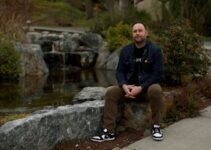
Unreserved45:26Decolonizing the sky
Many remote Indigenous communities in Canada have been relying on the aerospace industry for everything from transportation of goods, mail and medical supplies for decades.
Evolving technology like the use of drones is creating opportunities for Indigenous communities to become more self-reliant by using the sky as a highway.
“It’s really a decolonial effort where it returns the power into our hands so that we can again assert our own self-determination, determine how it unfolds within our region,” said Jacob Taylor.
Taylor is a member of Curve Lake First Nation, about 150 kilometres northeast of Toronto, and is the founder and CEO of Indigenous Aerospace.
His vision is to help Indigenous communities take control of the transportation of goods and medicines through the use of drones.
Helping First Nations help themselves
Taylor’s journey into the industry began while in Moose Factory, Ont., working on education programming for remote communities.
He said he learned a lot about the logistical challenges of remote First Nations communities in Northern Ontario that are primarily accessible by plane.
In 2016, an article by the late CBC journalist Jody Porter about a woman who died at a Webequie First Nation after the oxygen ran out at the community’s nursing station, spurred him into action.
“The nearest oxygen tank was 70 kilometers away, straight as the crow flies,” said Taylor. Since it was nighttime when the tank ran out helicopters couldn’t fly — but a drone could have.
“Remote piloted aircraft systems became a fascinating concept to solve some of the critical care logistics within the region.”
This began Taylor’s efforts trying to solve how to bring a regular influx of essential supplies to a community in desperate need of those services. But he was also interested in finding a way to help communities help themselves.
The drone industry was, and still is, an emerging one. And Taylor said he didn’t want to see Indigenous communities miss the chance to emerge as industry leaders.
In July 2021, Indigenous Aerospace launched with the goal of helping First Nations communities develop drone programs by offering education and employment.

“I benefit from delivering this and the community benefits from delivering this — and in tandem, together, we can achieve greater things than anyone could do in isolation,” Taylor said.
“There have been no treaties signed for the sky, so Indigenous people have an inherent right to participate in the aerospace industry.”
He said that the drones have already proven useful in some communities he’s worked with; they’re using the technology for search and rescue missions.
“This type of work being done by local people is quite heroic, and so there’s a real pride to it,” Taylor said.
“There’s no panacea, cookie-cutter solutions that really work in [all] our communities — we have to find the right fit for the right place and the best people to do that are the people that originate from there.”
Uniting coastal communities
Along the east coast of Newfoundland and Labrador, a small airline is making a big difference for isolated Inuit communities.
Air Borealis provides vital transportation of passengers and cargo to communities in Nunatsiavut that are accessible only by air, water or ice in the winter. The airline also made history recently with the flight of an all-female Inuit crew.
Zoie Michelin is a first officer with Air Borealis and was part of the historic moment.

She takes great pride in being able to help serve and connect communities across her traditional territory.
The airline fleet is made up of Twin Otter planes, which have nineteen seats. The small aircrafts bring the passengers and the pilots together, adding a very personal touch.
Michelin said having Inuit flight crews makes a big difference for the passengers.
“There are often comments from people telling us how proud and inspired they are to see female Inuk pilots operating within our lands,” she said. “Hearing that we are role models for young Indigenous children is truly inspiring.”
Aviation with an Indigenous worldview
Teara Fraser is a proud Métis woman and a leader in the aviation industry in Canada.
She went from being a pilot, to creating an aerial photography company, to launching her own airline called Iskwew Air based out of Vancouver International Airport.
Iskwew means woman in Cree. Fraser said choosing that as the name for her airline was a deliberate act of reclaiming language and matriarchy in an industry that is male dominated with an underrepresentation of Indigenous people.
She believes that an Indigenous worldview will revolutionize the aviation industry by helping guide the way to a more sustainable future and healthier relationship with the earth, the sky and each other.
“When I think about decolonizing, I think about how we are dismantling the systems that are no longer working,” Fraser said.

An Indigenous worldview centres the human responsibility to all our relations, from each other to the land, the sky and the water.
“I think about us recreating systems that are human centred and I think about Indigenous peoples leading in this innovative space.”
Fraser’s vision for the future of aviation also sees Indigenous women specifically at the helm of leadership.
“It means honouring matriarchal leadership and the unique ways that women lead, with focus on care and community.”


